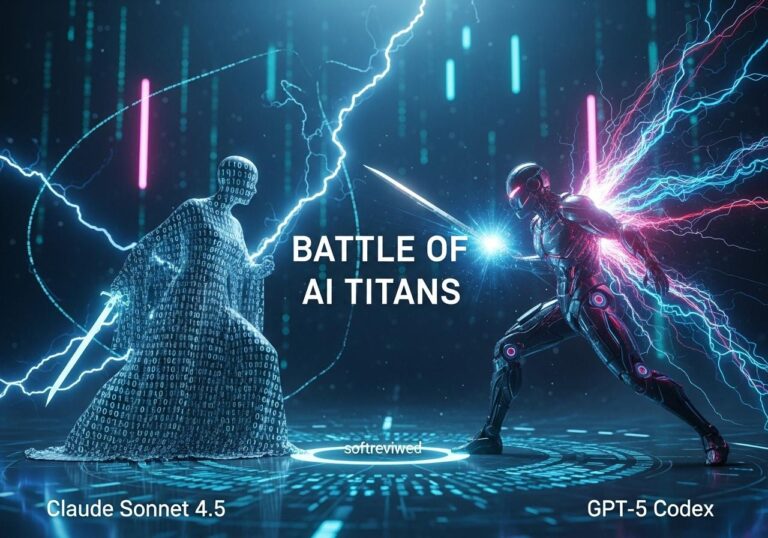🎙️ AI Voice Modification in Call Centers
How artificial intelligence is transforming Indian call center operations by altering accents in real-time
🤝 Teleperformance & Sanas Partnership
The largest call center operator has deployed Sanas’ real-time AI to modify Indian accents, aiming for ‘neutral’ speech and noise reduction.
⚙️ Tech Claims
The AI purportedly improves understanding, reduces handling time, and enhances customer intimacy by smoothing accents.
⚠️ Cultural & Ethical Concerns
Critics argue it erases cultural identity, raises workplace bias questions, and promotes “whitening” of accents.
🌎 Expanded Applications
Initially applied to Indian agents, it’s being adapted for Filipino and Latin American accents, widening its controversial reach.
📉 Investor Skepticism
Teleperformance’s stock dropped 11% post-announcement, as AI’s role in traditional call centers remains uncertain.
👥 Customer Sentiment Divides
Some appreciate clarity, while others express frustration over accent-based discrimination or request native English speakers.
The world of customer service is undergoing a significant transformation with the rise of artificial intelligence (AI). One of the most talked-about applications is AI-powered accent modification, a technology that aims to "neutralize" accents in real-time. Teleperformance, the world's largest call center operator, is at the forefront of this trend, investing heavily in AI tools that can alter the accents of its agents, primarily those in India and the Philippines, to sound more like native English speakers from Western countries. This move has sparked debate about the ethics of cultural erasure versus the potential for improved communication and customer satisfaction, prompting questions about the true cost of this technology. 📞
The Rise of Accent Modification AI 🚀
Accent modification AI, often referred to as accent neutralization or accent translation, is a technology that uses sophisticated algorithms to analyze and alter speech patterns in real-time. It works by identifying the unique characteristics of an individual's accent and then adjusting them to align with a target accent, typically a standardized form of American or British English. The goal is to make the speaker's voice sound more familiar and easier to understand for customers in specific regions. This technology is not just about pronunciation; it also tackles intonation, rhythm, and other subtle aspects of speech that contribute to a person's accent.
This technology is made possible by advancements in several areas of AI including:
- Speech Recognition: AI models are trained on vast datasets of speech, enabling them to accurately identify and transcribe spoken words, regardless of accent.
- Natural Language Processing (NLP): NLP allows AI to understand the nuances of human language, including grammar, syntax, and meaning, which is crucial for altering accents while preserving context.
- Real-Time Processing: Powerful processing capabilities enable the AI to modify speech on-the-fly, with minimal to no latency.
These advancements allow companies to deploy sophisticated accent modification tools that can be used for a range of purposes.
How AI is 'Neutralizing' Indian Accents ⚙️
The technology behind AI accent modification is complex, but the basic process can be broken down into a few key steps. First, the AI system analyzes an individual's speech patterns, identifying the specific acoustic features that make up their accent. This is done by using algorithms trained on large datasets of diverse speech samples, which allows the AI to recognize various accents. Next, the AI processes this data and modulates the speech patterns in real-time to alter the pronunciation, intonation, and other elements that contribute to the accent. Finally, this modified audio is delivered to the listener, making the agent’s speech sound closer to a standard English accent.
Teleperformance has partnered with Sanas, a US-based AI startup, to implement this technology. The Sanas AI platform not only modifies accents, including Indian accents, but also includes background noise cancellation features, which further masks the call center environment. This technology operates without storing data, ensuring that calls are modified in real time and that there is no lasting record of the original accent. Teleperformance is investing heavily in this technology, including a $13 million stake in Sanas, to improve customer interactions and reduce call times. Teleperformance is also collaborating with Sanas to further develop its AI models for accents beyond Indian and Filipino.
The Business Case: Efficiency and Customer Satisfaction ✅
The adoption of AI accent modification is largely driven by business interests. For call centers, clear communication is paramount. Companies argue that modifying accents, including Indian accents, helps to reduce misunderstandings and improve customer satisfaction. Teleperformance's Deputy CEO, Thomas Mackenbrock, stated that when an agent with an Indian accent is on the line, it can be “hard to hear, to understand.” By neutralizing these accents, they believe that they can create a more seamless and efficient customer experience. This push for efficiency is not just about better customer service, it also reduces call handling times, which can significantly cut costs for companies. Some other benefits include:
- Reduced Average Handling Time (AHT): AI-powered accent modification can reduce the time it takes to resolve customer issues, as customers are likely to spend less time trying to understand the agent, especially with Indian accents.
- Increased First Call Resolution (FCR): Clearer communication means that issues are more likely to be resolved on the first call, leading to higher customer satisfaction.
- Improved Customer Satisfaction (CSAT): When customers understand agents better, they tend to rate their service experience more highly.
- Increased Sales Conversion Rates: AI accent modification may lead to higher sales, as customers have a more positive experience with customer service representatives.
- Reduced Agent Turnover: AI can reduce stress on agents, who no longer need to worry about being misunderstood. This can lead to lower turnover rates and better employee morale.
Teleperformance claims that their technology creates a "win-win" for both businesses and customers, by reducing misunderstandings and creating a more “intimate” customer experience. These AI tools are not only changing the sound of customer service, but also the metrics that measure its success.
Ethical Concerns: Cultural Erasure and Linguistic Bias ⛔
While the business case for accent modification AI is compelling, there are significant ethical concerns that cannot be ignored. Critics argue that these technologies reinforce linguistic bias, and promote the idea that certain accents, including Indian accents, are inherently inferior to others. By altering accents, companies are implying that non-standard English is less acceptable, which can lead to discrimination and a sense of cultural erasure. The concerns can be summarized as follows:
- Reinforcing Linguistic Hierarchy: Critics suggest that AI accent modification could further marginalize non-native English speakers, as it implies that accents other than standard American or British English are somehow inadequate, specifically targeting accents such as the Indian accent.
- Cultural Erasure: AI-driven alteration of accents can be seen as a form of cultural erasure, diminishing the uniqueness of diverse linguistic identities and potentially making agents feel they must conform to a “western” standard of speaking, effectively minimizing the presence of Indian accents.
- Dehumanization: The technology could lead to a sense of inauthenticity and dehumanization for agents, who may feel pressure to suppress their natural way of speaking, causing stress and burnout.
- Exploitation: There are also concerns about the potential for the technology to be exploited for fraudulent purposes, making it easier for scammers to impersonate individuals over phone calls, for example.
- Lack of Transparency: Some companies may not be fully transparent with customers about their use of accent modification technology, which can erode trust.
These ethical dilemmas have led to a broader debate about the role of AI in shaping our interactions. Should technology be used to eliminate accents, or should it be used to foster greater understanding and acceptance of linguistic diversity?
The Impact on Agents and the Call Center Workforce 🧑💼
The implementation of AI accent modification, particularly for Indian accents, also has a direct impact on the call center workforce. While companies like Teleperformance maintain that the technology is designed to augment, not replace, human agents, there are concerns about how it may alter the nature of their work. It places additional pressure on call center agents to adapt to the modified voice, and it can lead to feelings of inauthenticity, dehumanization, and stress, all while adding more pressure to meet customer service quotas.
There are also concerns about the potential for AI to impact job security. Although AI is currently being used to enhance human capabilities, there are questions about how the industry may evolve, and whether the reliance on AI technologies could lead to a reduction in the workforce. It remains to be seen whether AI will be a tool that helps the call center worker, or a tool that leads to job displacement.
Beyond Accent: The Broader Impact of AI in Call Centers 🤖
AI is not just changing how agents sound; it is also revolutionizing other aspects of call center operations. AI-powered tools are being used for:
- Automated Customer Service: Chatbots and virtual assistants are handling routine inquiries, freeing up human agents for more complex issues.
- Real-Time Support: AI provides agents with access to real-time information and insights, enabling them to offer more personalized and informed service.
- Performance Monitoring: AI can monitor and analyze agent performance, providing feedback and coaching to improve service quality.
- Predictive Analytics: AI analyzes customer data to predict needs and behaviors, allowing call centers to anticipate issues before they arise.
These technologies are streamlining operations, reducing costs, and improving customer satisfaction. However, they also raise important questions about data privacy, ethical use, and the future of human work in the customer service industry.
The Future of Communication: Cultural Sensitivity or Homogenization? 🌎
The future of call center communication is likely to be shaped by the continued development and adoption of AI technologies. While there are clear benefits to using AI to improve efficiency and customer satisfaction, it is also essential to address the ethical concerns that have been raised. There is a real risk of erasing cultural identities, especially when modifying accents such as Indian accents, in favor of a more homogenous form of communication.
It's important for companies to consider implementing these technologies in a way that is sensitive to cultural diversity and that prioritizes transparency and inclusivity, especially if the goal is truly to improve the overall customer experience. This requires balancing the business goals of efficiency with the human values of respect, empathy, and authenticity.
As AI technologies continue to evolve, it is up to us to ensure that these tools are used in a responsible and ethical manner, that values diversity, and that does not compromise the human element that is at the heart of good customer service. The question is not whether technology can change how we communicate, but whether it will help us communicate more effectively in a way that honors cultural differences and promotes understanding. To further explore the technology used in real-time voice modification, you can visit the official website of Sanas for more details.
The Unspoken Truth About 'Neutralizing' Accents 🗣️
The discussion around AI accent modification reveals a deeper societal tension, as it can be seen as a form of linguistic bias, where certain accents are valued over others. This raises critical questions about the way we perceive and value different cultures, and whether we are inadvertently allowing technology to perpetuate existing social hierarchies. The true measure of progress is not just about efficiency, but also about fostering understanding, respect, and empathy for all forms of human expression.







